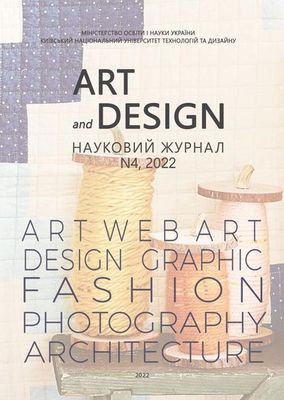ECO-DESIGN OF THE LIGHTING ENVIRONMENT OF THE MODERN CITY: FORMULATION OF APPROACHES TO THE IMPROVEMENT OF LIGHTING MEASUREMENTS OF URBAN FACILITIES
DOI:
https://doi.org/10.30857/2617-0272.2022.4.10Abstract
The purpose of the research is to determine the compliance of the existing methods of evaluating projects of urban outdoor lighting both with the illuminance index according to the State Building Code (DBN) and the modern requirements of eco-design of the city’s light environment.
Methodology. The research is based on the comprehensive approach: general scientific comparative, analytical, system-informational, expert methods are applied as an integration of the possibilities of introducing promising innovative technologies for qualitative assessment of changes in the lighting of recreational environments of modern cities. Content analysis and methods of modeling design industrial objects as the main provisions of the system approach were used in this work.
The results. The analysis of standardized methods of determining illumination as a standardized indicator of the quality of urban planning elements (streets, green areas, squares, etc.) enabled the researchers to make a comparison and combine the measured normative indicators with the requirements of the eco-design of the modern urban lighting (according to energy efficiency, comfort and safety indicators) as well as to create comparative tables according to the determined indicators. The attention was also focused on the weak points of the existing method of lighting measurements and the main results of the analysis: high labor intensity, limited number of objects/survey areas; insufficient array of initial data for the design of the object lighting. An algorithm was created, modeling was performed and industrial equipment was proposed to automate the process of obtaining the necessary and sufficient amount of actual data as a characteristics of the light environment.
Scientific novelty. The expediency of improving the method of collecting initial data for solving project tasks is substantiated. An option to use the developed hardware and software complex is proposed, which will allow to automate the elements of the system in the process of collecting primary data for modeling the illumination levels of urban objects. Theoretical studies are based on the working methods of expert groups and Commission (EU) Regulation No. 2019/2020. An analysis of the consequences of application of modern eco-design requirements to the audit results of the external illumination system was carried out.
Practical significance. The volume of scientific research and practical works on determining the level of street lighting made it possible to propose new approaches to the formulation and development of a set of measures and the methodology of collecting initial data for solving design tasks.

